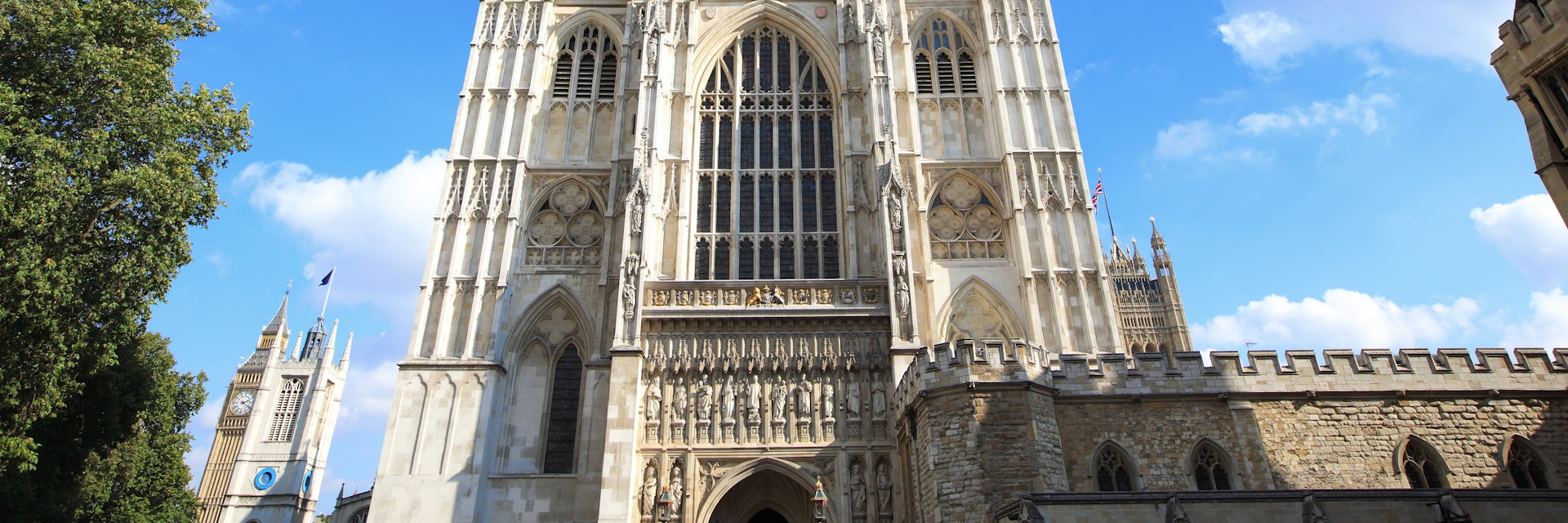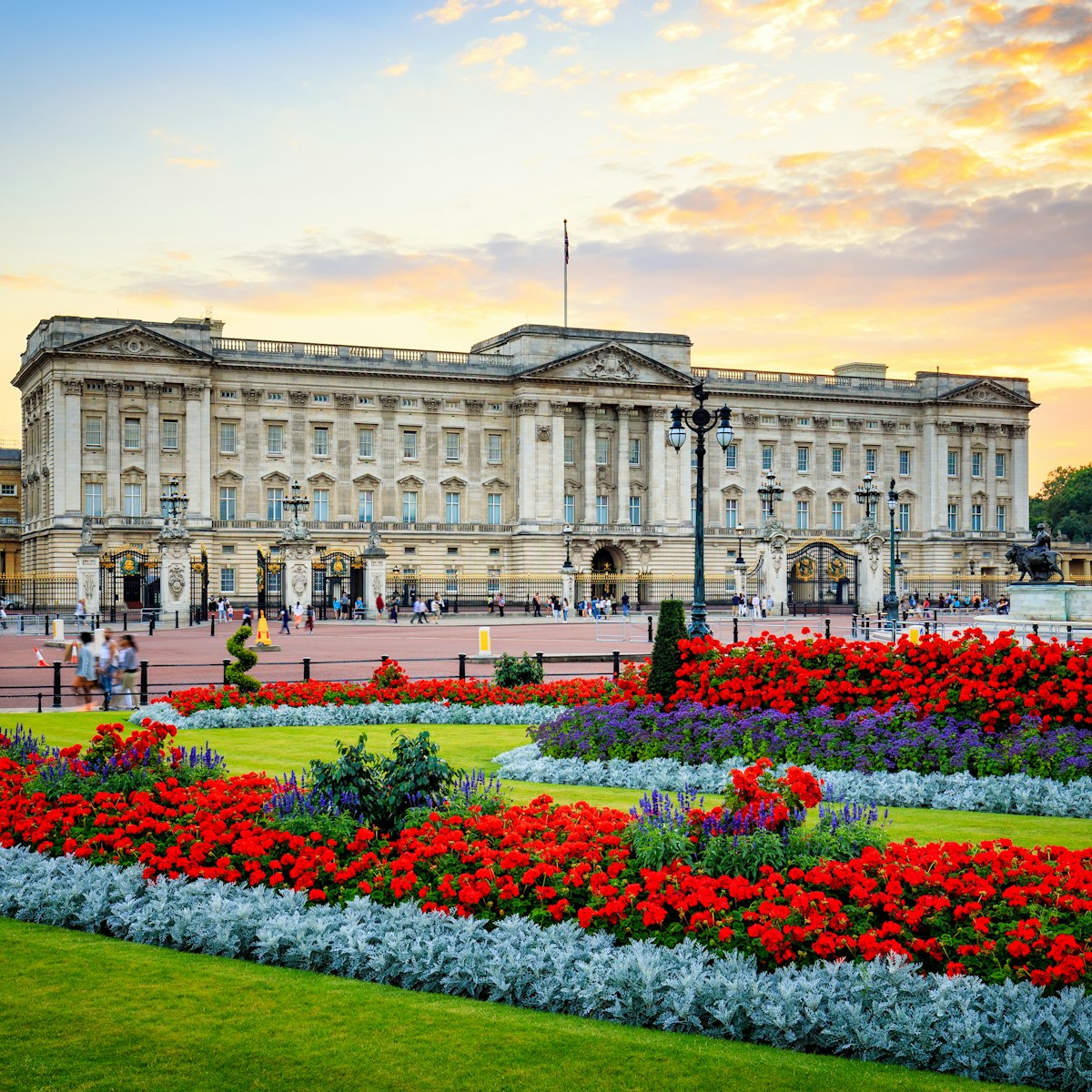A splendid mixture of architectural styles, Westminster Abbey is considered the finest example of Early English Gothic. It's not merely a beautiful place of worship – the Abbey is still a working church and the stage on which history unfolds. Never a cathedral (the seat of a bishop), Westminster Abbey is what is called a "royal peculiar", administered by the Crown.
Inside Westminster Abbey
At the heart of the Abbey is the beautifully tiled sanctuary, the stage for coronations, royal weddings and funerals. Architect George Gilbert Scott designed the ornate High Altar in 1873. In front of the altar is the Cosmati Pavement, dating to 1268. It has intricate designs of small pieces of stone and glass inlaid into plain marble, which symbolize the universe at the end of time (an inscription claims the world will end after 19,683 years). At the entrance to the lovely Chapel of St John the Baptist is a sublime translucent alabaster Virgin and Child, placed here in 1971.
The most sacred spot in the Abbey is the shrine of St Edward the Confessor, which lies behind the High Altar; access is restricted to guided tours to protect the fragile 13th-century flooring. King Edward, long considered a saint before he was canonised, was the founder of the Abbey, and the original building was consecrated a few weeks before his death in 1066. Henry III added a new shrine with Cosmati mosaics in the mid-12th century where the sick prayed for healing – and also chipped off a few souvenirs to take home.
The Quire (choir), a stunning space of gold, blue and red Victorian Gothic above a black-and-white chequerboard tiled floor, dates to the mid-19th century. It sits where the original choir for the monks' worship would have been but bears little resemblance to the original. Nowadays, the Quire is still used for singing, but its regular occupants are the Choir of Westminster Abbey – about 30 boys and 12 "lay vicars" (men) who sing the services and evensong.
Henry VII's magnificent Perpendicular Gothic–style Lady Chapel, with an impressive fan-vaulted ceiling and tall stained-glass windows is at the eastern end of the church.
Opened in 2018, the Queen's Diamond Jubilee Galleries are a museum and gallery space located in the medieval triforium, the arched gallery above the nave. Among its exhibits are the death masks and wax effigies of generations of royalty, armor and stained glass. Highlights are the graffiti-inscribed chair used for the coronation of Mary II, the beautifully illustrated manuscripts of the Litlyngton Missal from 1380 and the 13th-century Westminster Retable, England's oldest surviving altarpiece.
At the western end of the nave near the Tomb of the Unknown Warrior, killed in France during WWI and laid to rest here in 1920, is St George's Chapel, which contains the rather ordinary-looking Coronation Chair, upon which every monarch since the early 14th century has been crowned (apart from joint monarchs Mary II and William III, who had their own chairs fashioned for the event in 1689).
Apart from the royal graves, keep an eye out for the many famous commoners interred here, especially in Poets' Corner, where you'll find the resting places of Geoffrey Chaucer, Charles Dickens, Thomas Hardy, Alfred Tennyson, Samuel Johnson and Rudyard Kipling, as well as memorials to the other greats (William Shakespeare, Jane Austen, the Brontë sisters etc). Another set of illustrious stones is in Scientists' Corner near the north aisle of the nave, including the final resting places of Sir Isaac Newton, Charles Darwin and the ashes of Stephen Hawking.
The octagonal Chapter House dates from the 1250s and was where the monks would meet for daily prayer and their job assignments, before Henry VIII's suppression of the monasteries some three centuries later. To the right of the entrance to Chapter House is what's claimed to be the oldest door in Britain – it’s been there since the 1050s. Used as a treasury, the crypt-like Pyx Chamber dates from about 1070 and takes its name from boxes that held gold and silver to be tested for purity to make coins.
History
Much of the Abbey's architecture is from the 13th century, but it was founded much earlier, in AD 960. Henry III began work on the new Abbey building in 1245 but didn't complete it; the Gothic nave was finished under Richard II in 1388. The Lady Chapel was completed after 13 years of construction in 1516.
For centuries, the country's greatest have been interred here, including 17 monarchs from King Henry III (1272) to King George II (1760). Every monarch since William the Conqueror has been crowned here, with the exception of a couple of Eds who were either murdered (Edward V) or abdicated (Edward VIII) before the magic moment. It has also hosted 16 royal weddings, the most recent being that of Prince William and Catherine Middleton in 2011.
Tickets and other practicalities
Sightseeing visitors must book their tickets in advance via the website. There is an additional charge for a multimedia guide. The Abbey is open for worship and individual prayer, and there are daily services. Check the website for the schedule. Evensong is 5pm on Tuesdays and 3pm on weekends.
Photography is allowed inside the church, but beware that there are restrictions on what you can photograph and when.












